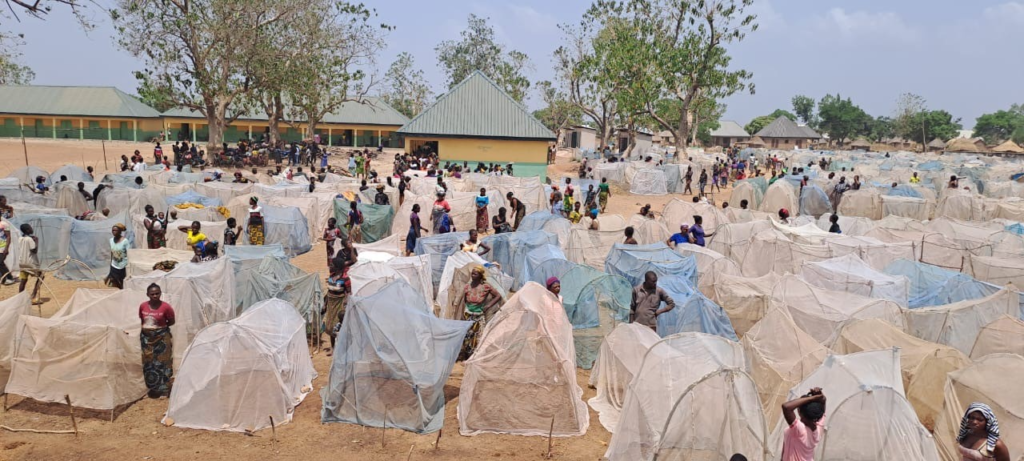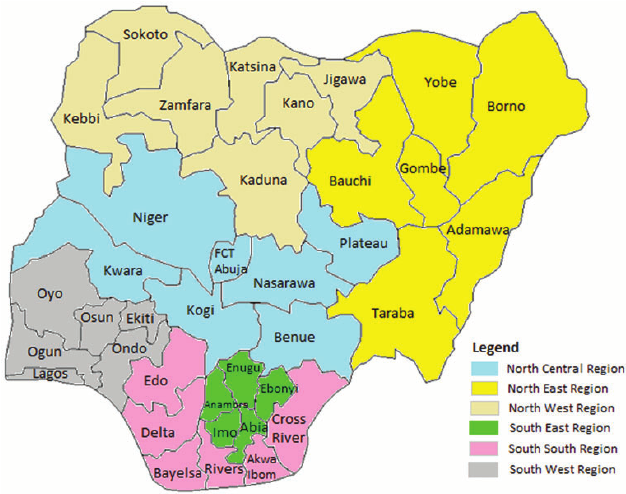By Alex Agbo
[Abuja] Environmental experts and urban planners interviewed by TruthNigeria warn that the fluctuating weather pattern known as El Nino could cause devastation in Nigeria’s North in the four-year period that began in mid-2023.
The most concerning forecast came from Morgan Stanley, a US based investment bank on September 25 titled Brace Up for inflationary storm via Zerohedge.
It states, if “weather models are accurate, increased rainfall can be expected in the US, Argentina, the Andes, while other regions like Southeast Asia, Australia, Brazil, Colombia Africa and Central America and the Caribbean will experience high droughts.”

Bad governance compounding bad weather
“This is a warning that must be taken seriously. It reveals that there would be high stakes, particularly among us Africans, who are suffering from the effects of perennial bad governance,” said Dr. Haruna Lumi Zamani, an Urban and Regional Planning lecturer at the Federal University of Technology, to TruthNigeria. Zamani said the impacts to the Middle Belt could affect millions.
The El Nino pattern could bring above-average rainfall to the southernmost regions of Nigeria but dangerous drought to the Sahel region which includes some of the territory of Nigeria’s northern states, according to climate models.
El Niño means “The boy” in Spanish. It is a band of warm ocean water that develops in the central and east-central equatorial Pacific, (approximately between the International Date Line and 120°W) with high air pressure in the western Pacific and low air pressure in the eastern Pacific.
Its phases last about four years. According to records, some cycles could last from two to seven years. During its development, rainfall is expected between September and November.
One of the consequences of El Nino is expected to be forced migration. Population naturally gravitates to areas where sustenance is available.
“Economically, El Niño is most commonly associated with disruption in agriculture, but energy and particularly green energy can be affected…” according to the subscribers-only Morgan Stanley document.
Unfavorable changes in weather force people out to more friendly areas and lead to congestion as well as the struggle for survival in the areas where there are signs of hope.
A BBC report on the Kogi State flood in October 14th, 2022 states that more than 1.4 million people were forced out of their homes by the flood when the river Niger overflowed its banks in Lokoja, the Kogi State capital.
The overflowed river Niger would affect the southeast as well, according to Mr Tolu Abeni, an environmental expert with the Kogi State Ministry of Environment. “The middle belt is a transit route to the east and River Benue then to Onitsha and Delta regions because these places are rain forest,” Mr Abeni said to TruthNigeria.This view presupposes that there would be a catastrophic consequence if El Niño hits Nigeria.
Threat of forced migration from Niger Republic

Temporary shelters for internally displaced people in camp near Makurdi, capital of Benue State. The state has 2 million persons forced into IDP camps because of ethnic cleansing raids described as farmer herder clashes, which are exacerbated by soaring population
If any negative event occurs in Niger, for instance, Nigeria will bear the brunt of migration.
According to phase 1 of the 1979 ECOWAS Protocol, “Citizens of member states were given the right to travel within the subregion without a visa for a period not exceeding 90 days. It is already a freedom to move from place to place, at least for the allowed period.” The ethnic immigrants from other parts of the subregion include the Hausa, Tuaregs, Zarma and Fulani.
“The Fulani are chiefly herdsmen. During the dry season, which is usually long in the north, they migrate to look for grass for their cattle. They move towards the Middle Belt which includes Niger State, Abuja, Benue State, Kogi State and Kwara state,” Zamani said to TruthNigeria. The Fulani ethnicity is believed to be the largest transient cattle-herding tribe in Africa, and reportedly has approximately 10 million tribe members in Nigeria.
The contest for the available resources in the Middle Belt states already is fierce because the migrants and their hosts are all focused on owning the land and using it for their economic benefits. Competition for land and water is made worse by the fact that both Nigeria and the Niger Republic have soaring birth rates. The current population of Nigeria surged 2.41 percent from 2022 to 2023 and is 223,804,632.
Any natural disaster in Niger Republic would force its population through the northern Nigeria states of Sokoto, Kebbi and Katsina into Nigeria.
The current population of border areas between Nigerian states and corresponding states in Niger are already straining the capacity of local land and water resources. According to https://citypopulation.de/en/nigeria/admin/NGA034__sokoto/, the 2022 population of Sokoto state is 6,391,000 for a land size of 31,041 square kilometres. Most of the land is arid, and thus fierce competition is in place for survival. The Flow Monitoring Point (FMP), set up in March 2017, monitors cross border migration between Nigeria and Niger, covering three migratory routes in Illela, Gada and Sabon-Birnin.
According to Tolu Abeni, an environmental expert with the Kogi State Ministry of Environment, ‘There is massive influx of herders into the state, particularly the riverine areas of Olamaboro, Itobe, Idah, Ofu and Lokoja areas, especially during seasons of lush greenery.’
He maintained that the influx of people causes conflicts because farmlands become contentious. Food gets scarce and costlier. The worrisome matter is that the government is seemingly doing little or nothing to stall a repeat of these events.
Is the Tinubu-led government taking the right steps towards preparing for the consequences of the impending floods?
“The problem of insecurity has worsened across the country, especially in the northern states where most agricultural outputs are produced,” said Dr. Daniel Joseph Onogwu, an economics researcher at the University of Ibadan, to TruthNigeria.
“Floating the naira has not helped either as the price of imported goods has skyrocketed. With little to no local manufacturer to compete with the producers of imported goods, inflation becomes inevitable, and the government fighting for legitimacy will have its work cut out for it in terms of investors’ confidence in the administration. So, we may continue to experience high inflation in the foreseeable future,” Joseph added.
Alex Agbo is a Socio-economic analyst based in Lagos, Nigeria
@TruthNigeria, https://truthnigeria.com/2023/10/new-weather-pattern-threatens-drought-flooding-and-forced-migration/





